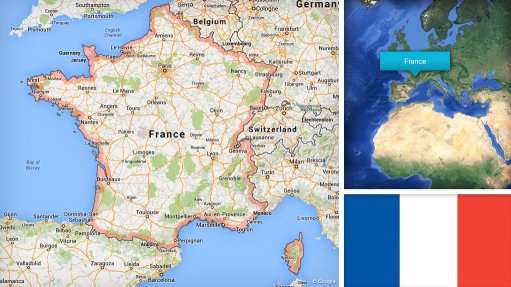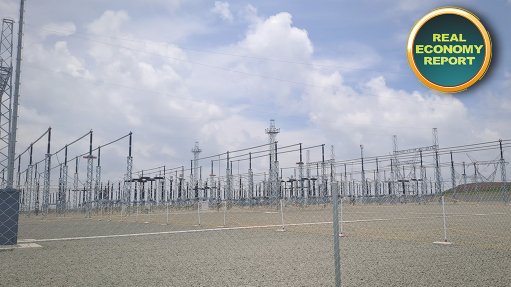Electrical engineering during World War II
In this article and a few more to come in this column, I am going to write about electrical engineering in World War II. Okay? Good.
We have all seen the film, haven’t we? The luxury liner is cruising through the calm waters of the North Atlantic. The loving couple are holding hands and gazing at the North Star when, with growing surprise, the couple notice, in the water below, a trail of bubbles fast approaching the ship. The alarm is sounded but, too late, the torpedo strikes– massive explosion and cut to the German U-boat crew shaking hands in the attacking submarine.
An educated electrical engineer (no Natal graduates need apply) will know that this scene is from the World War I. It is all due to the trail of bubbles left by the torpedo. The German World War I torpedoes were propelled by a motor that ran off steam from a chemical reaction. The German World War II torpedoes were electrically driven – by batteries and motors.
The rationale behind the electric torpedoes was that they did not leave a bubble wake. In my opinion, this was not a good enough reason to get rid of the steam torpedo. The steam torpedo ran at about 75 km/h. Thus, it was very unlikely that any ship, even if its crew did see the bubble wake, could do much about it. The electric torpedo was 20 km/h slower and, having a battery, the device had a limited shelf life. Worse, the electric torpedo was fitted with a magnetic sensing firing system that often did not work: a British battleship, HMS Nelson, managed to survive destruction when three torpedoes from U-56 struck simultaneously on her keel and broke themselves without detonating. It took time to resolve the problem with the electric torpedo but at no stage did the Germans revert to the steam design.
The purpose of the German submarine fleet was to attack the ships that transported material from America and other parts of the world to Britain. Without materials, Britain could not continue the war. The British arranged the ships in groups, called ‘convoys’, and each convoy was protected by fighting ships (destroyers, frigates, and so on). The British were aware of the German submarines but were quietly confident: they had developed ASDIC, by means of which they could easily detect submarines under water and, having detected them, they could drop underwater bombs (‘depth charges’), which would blow the submarine to pieces.
The British thought that submarines could dive no deeper than 160 ft (about 50 m), which is not terribly deep (it is half the length of a rugby field) and, thus, expected that depth charge attacks would be fairly successful. In point of fact, the subs could go to as deep as 250 ft and, thus, since the depth charges took time to sink, could be well out of the way by the time they exploded.
The Germans took another approach. For convoy attacks, instead of submarines attacking submerged, they attacked at night, on the surface – so they could not be detected by ASDIC prior to an attack.
And now, dear reader (those of you still awake), what (you may ask) value is this information? I tell these stories to my students. I say, what lessons do we learn? The Germans replaced a vital part of their whole war effort with a part that did not work – the one thing that has to be 100% is the final weapons delivery system – they should not have phased the old one out without making sure the new one worked. The British had a good solution to a threat; but it was a threat they decided was valid – they did not think of it reoccurring in a different form. So, say the students, what? I say, had ASDIC warded off attacks on neutral ships, then one important ship may not have been sunk. That ship was the SS Lusitania. Its sinking propelled the US to a war footing. I point out that if U-56 had sunk HMS Nelson, it is a historical fact that there was an important politician aboard who could have perished. His name . . . Winston Churchill. Engineering errors have long-term consequences.
Article Enquiry
Email Article
Save Article
Feedback
To advertise email advertising@creamermedia.co.za or click here
Comments
Press Office
Announcements
What's On
Subscribe to improve your user experience...
Option 1 (equivalent of R125 a month):
Receive a weekly copy of Creamer Media's Engineering News & Mining Weekly magazine
(print copy for those in South Africa and e-magazine for those outside of South Africa)
Receive daily email newsletters
Access to full search results
Access archive of magazine back copies
Access to Projects in Progress
Access to ONE Research Report of your choice in PDF format
Option 2 (equivalent of R375 a month):
All benefits from Option 1
PLUS
Access to Creamer Media's Research Channel Africa for ALL Research Reports, in PDF format, on various industrial and mining sectors
including Electricity; Water; Energy Transition; Hydrogen; Roads, Rail and Ports; Coal; Gold; Platinum; Battery Metals; etc.
Already a subscriber?
Forgotten your password?
Receive weekly copy of Creamer Media's Engineering News & Mining Weekly magazine (print copy for those in South Africa and e-magazine for those outside of South Africa)
➕
Recieve daily email newsletters
➕
Access to full search results
➕
Access archive of magazine back copies
➕
Access to Projects in Progress
➕
Access to ONE Research Report of your choice in PDF format
RESEARCH CHANNEL AFRICA
R4500 (equivalent of R375 a month)
SUBSCRIBEAll benefits from Option 1
➕
Access to Creamer Media's Research Channel Africa for ALL Research Reports on various industrial and mining sectors, in PDF format, including on:
Electricity
➕
Water
➕
Energy Transition
➕
Hydrogen
➕
Roads, Rail and Ports
➕
Coal
➕
Gold
➕
Platinum
➕
Battery Metals
➕
etc.
Receive all benefits from Option 1 or Option 2 delivered to numerous people at your company
➕
Multiple User names and Passwords for simultaneous log-ins
➕
Intranet integration access to all in your organisation

















